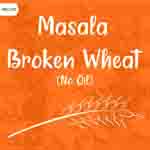
Dal prepared by cooking lentils and/or pulses is extremely common to find in Indian cuisine. It forms an integral part of Indian meals. One of the popular pairings to find with a Dal is rice. Dal and rice could be voted as one of the comfort foods for Indians.
Dal could seem as an easy dish to prepare, but at the same time a lot could still not go as per expectations. For preparing delicious Dal, it is much more important to first understand the basics and set processes involved. The rest of the additions such as vegetables, spices, etc. being used could be played with easily after that.
I have tried to share below some of my major learnings and observations which I have understood over the years of my cooking journey. They are quite easy to understand and follow. Here they are:
Phase 1 - Prep:
- Pulses/lentils are dried seeds of legumes known as Dal
- Hence, soaking them is an important step before cooking
- The soaking time would vary depending on the type being used viz., whole or split or skinned
- To avoid overcooking, find out the time required for the specific Dal being used
Phase 2 - Cooking:
- Slow cooking method extracts the maximum flavor of the Dal
- Dal to Water ratio should be at least 1:3
- Pressure cooking reduces the cooking time drastically while retaining the flavor
- Add any sour/acidic ingredient such as tomatoes, tamarind, etc. towards the end
- Add only salt or turmeric (if the recipe calls for it) in the beginning
- First cook the Dal separately and then add the oil, spices, vegetables, tempering, seasoning, etc.
- Lightly temper the spices, especially the powdered ones to be added
- Use an egg whisk for a creamy consistency and whisk till you get the desired texture
And that's it! These are the most beneficial points that I have personally experienced come in handy while preparing Dal.









